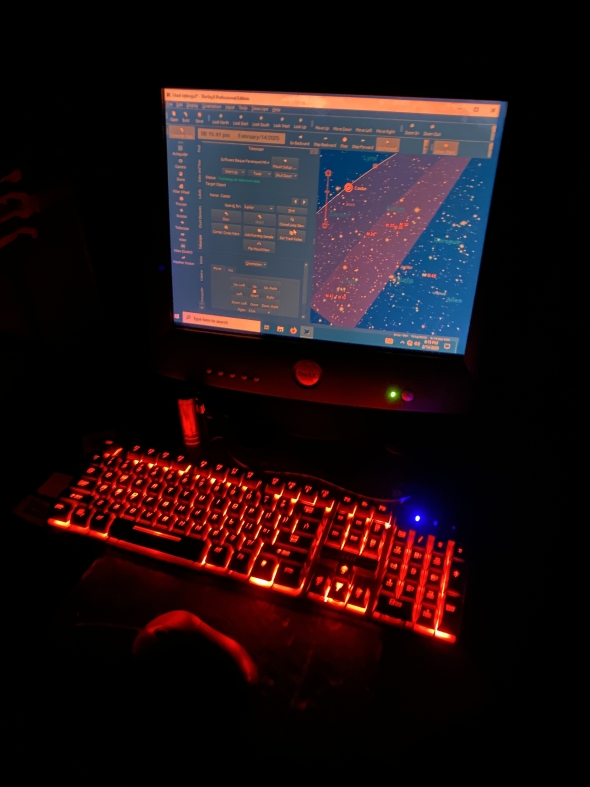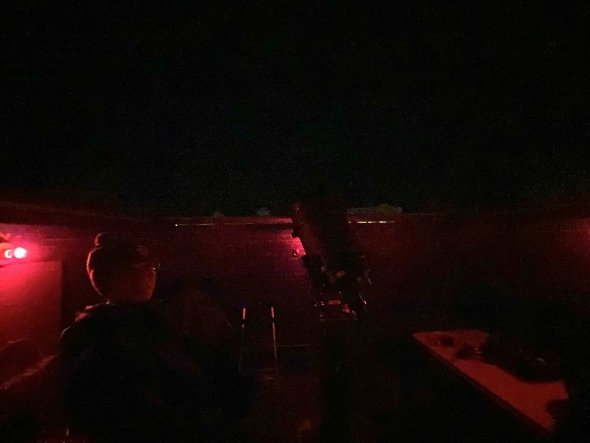
Observing Hanover's Night Sky
I recently took advantage of a rare clear winter night to attend a public observing session hosted by Dartmouth's Physics and Astronomy Department. I hadn't realized the observatory was open to the public until a friend, Luca, invited me to join him. Looking for a change of pace from my usual routine after a long day of classes, I decided to go along.
We made our way to the old Shattuck Observatory, then continued to the North Observatory, where Dartmouth's newer telescope is housed. The building was a small, rectangular structure with an open roof, lit by red lights to preserve night vision. At the center of the room stood the telescope, controlled by a computer displaying astronomical charts. With just a click of a mouse, the telescope could be adjusted to focus on different objects in the night sky.

Our first target was Jupiter, which appeared especially clear. We could even make out some of its moons. Next, we turned our attention to Mars, glowing with its distinctive reddish hue. From there, we moved on to deep-sky objects, starting with M35, a bright star cluster in the constellation Gemini. We then viewed M37, another dense cluster in Auriga.
One of the more unusual sights of the night was the Clown Face Nebula in Gemini. Seeing this planetary nebula through the telescope was interesting—it was cool to observe something so far away in detail. Following that, we looked at Sigma Orionis, a binary star system in Orion. It consisted of four stars arranged roughly in a line, with one noticeably brighter than the others. Finally, we ended the night by observing Castor, another binary star system in Gemini, with two stars of similar brightness appearing next to each other.

I had never used a telescope this powerful before, and it was fun to see everything up close. It's nice that this equipment is available to students, though I don't think many students have heard of the observatory being open to the public—it's a bit of a hidden gem. After a day of attending to endless student responsibilities, stepping into the observatory and looking at the stars made for a relaxing change of pace.
I'm hoping to attend more public observing nights, especially as the weather warms up in the spring and summer. I also have to give kudos to my friend Luca, a Physics and Astronomy major, who managed the telescope and explained everything we observed. It was thanks to him I discovered the observatory and all it offers—and ultimately wrote this blog post.
















